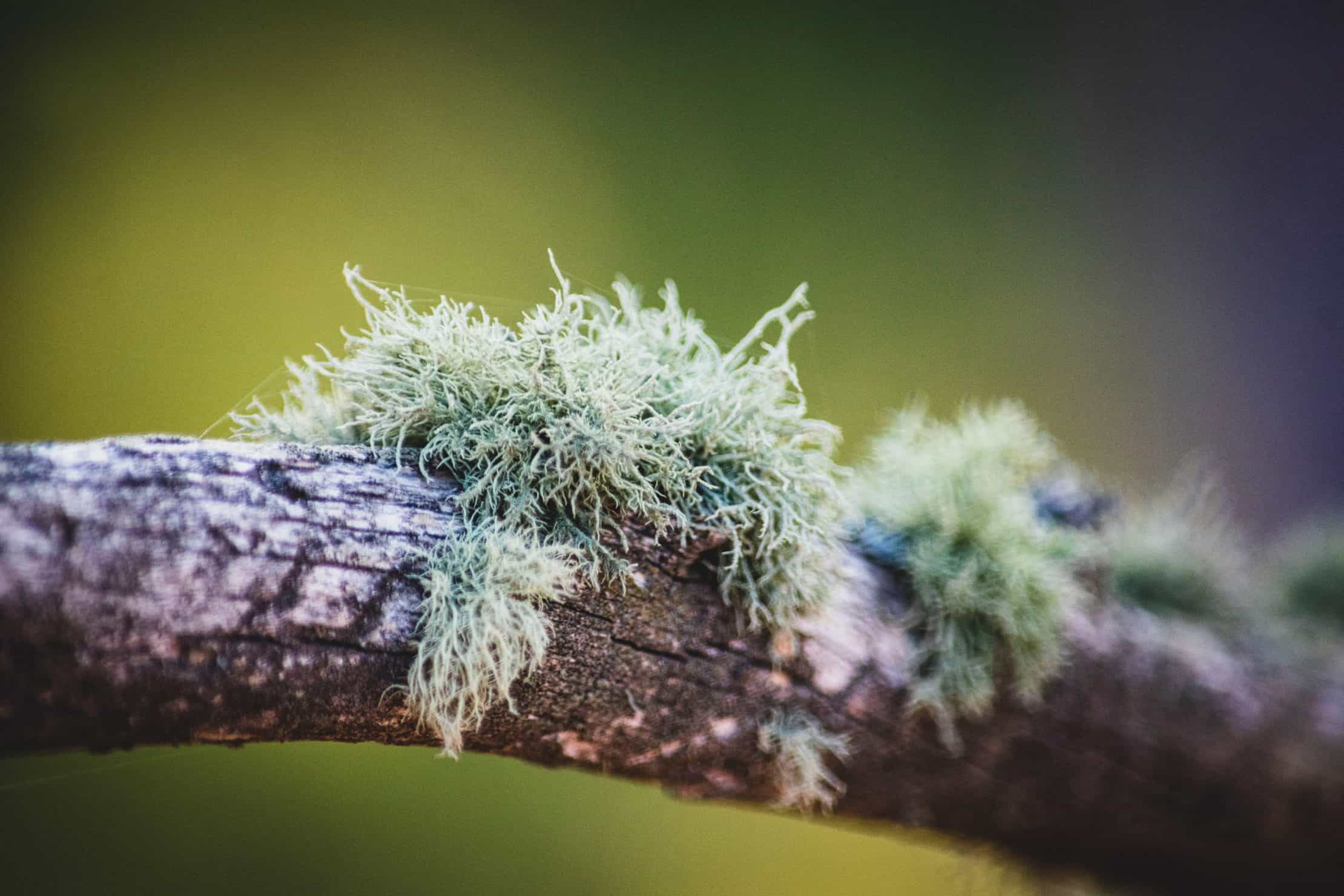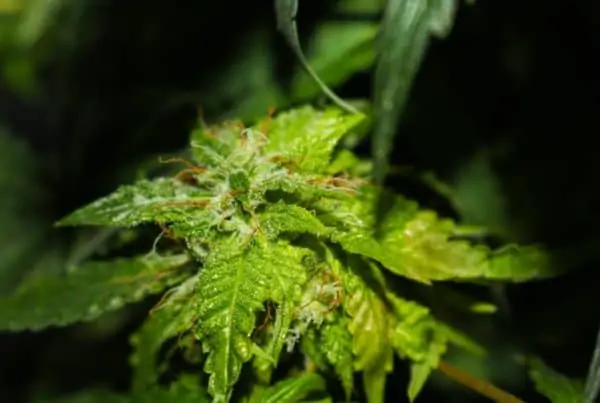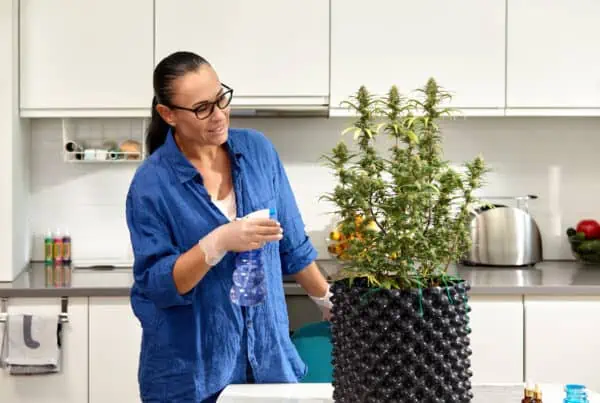TABLE OF CONTENTS
Powdery mildew (PM), otherwise known as white powdery mildew (WPM) or cannabis mold, is a type of rapidly reproducing fungus known to eat up affected cannabis plants.
The visible sign of its presence is the formation of white or sometimes gray spots and flour-like powdery patches on the leaves of your cannabis plants.
Powdery mildew is most common in areas with moderate temperature, high humidity, and low light intensity.
It often attacks young cannabis plants that are only a few weeks old.
Powdery mildew hinders photosynthesis and cripples the harvest.
Symptoms of Powdery Mildew in Cannabis
Here are some of the symptoms you can expect to see when powdery mildew occurs on marijuana:
- Pale coloration
- White powdery patches in plant leaves
- Wilting and dying plants
- Visible growth of molds
How To Prevent and Control Powdery Mildew on Cannabis
1. Spacing
Seeing how powdery mildew spreads and attacks your cannabis plantation, prevention is most reasonable. Whether you're an outdoor or indoor marijuana grower, the best and ultimate approach to getting rid of powdery mildew is by prevention.
Begin by allowing enough space between each plant while planting or while transferring the young plants from the nursery beds to their primary location on the farm.
2. Clone Only From Trusted Sources
Clean new clones of or take them to a lab where they'll be examined before introducing them into the farm.
This approach ensures you bring in only plants that are not infected into the fold. In other words, you can maintain a quarantined cannabis growing environment by ensuring new plants have a clean bill of health before planting them.
3. Proper Ventilation
Poor airflow can be detrimental to the health of your marijuana plants, just as excessive wind can be. If you're growing your cannabis in an enclosed facility, be sure to create room for the free flow of air.
The plants, too, should be adequately spaced apart as a powdery mildew outbreak can result from poorly ventilated environments.
4. Decontaminate All Equipment in the Environment Before Storage
Contaminants should be kept out of the growing facility as much as possible. You can use hydrogen peroxide to decontaminate all equipment whenever you use them. Decontamination also applies to personnel just as much as it does to equipment.
5. Control Humidity in the Environment
You should establish a proper and efficient method of dealing with humidity in the environment. This is essential for cannabis cultivation. Excessive humidity, for instance, is not ideal for growing cannabis plants. To create an environment with the right humidity level for cannabis cultivation, you might need to consult a HVAC technician.
Cannabis growers can check the spread of diseases and unfavorable conditions, such as powdery mildew, by maintaining the right humidity within the growing environment.
“
There are over 300,000 jobs in the cannabis industry. CTU trained me for one of them!

Makes $24.50 @ THC +
Use Any of the Following Products to Safely Get Rid of Powdery Mildew on Cannabis
- Neem oil
- Garlic
- Milk
- pH up (if you are in need of pH up we recommend using the General Hydroponics brand)
- Sesame oil
- Hydrogen Peroxide added to water (I tablespoon per gallon)
- Cottonseed oil spray
To learn how to grow cannabis indoors and how to grow massive healthy cannabis plants outdoor, make sure to enroll at Cannabis Training University.
To start your own marijuana garden and learn how to prevent common problems that most new growers experience, sign up at the #1 rated online marijuana school today!

Luis Cordova
Luis Cordova is a distinguished author, and renowned expert in cannabis cultivation, who possesses a Master's degree in Plant Biotechnology and Pharmaceutical Science. As a valued contributor to highly esteemed publications such as Cannabis Training University and Maximum Yield Magazine, Luis has emerged as a trusted source of guidance and knowledge in the cannabis industry. Having written thousands of informative articles, Luis is widely recognized for his comprehensive expertise on cultivating cannabis, both indoors and outdoors.












 Jeff was involved in an accident where he endured a traumatic brain injury. He had a week-long stay in ICU where brain surgeons
Jeff was involved in an accident where he endured a traumatic brain injury. He had a week-long stay in ICU where brain surgeons  100% risk free money back guarantee within 48 hours after purchase if student has not completed any of the courses or exams.
100% risk free money back guarantee within 48 hours after purchase if student has not completed any of the courses or exams.